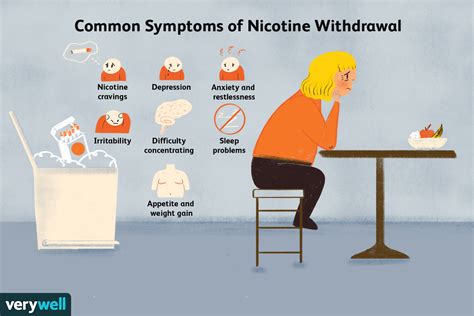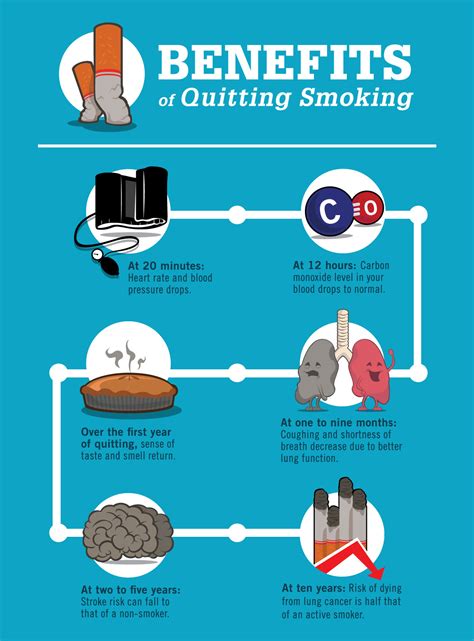Intro
Discover the challenging Tobacco Withdrawal Effects, including nicotine cravings, anxiety, and depression, and learn how to manage symptoms with strategies and support for a successful quit journey.
Tobacco withdrawal effects are a significant concern for individuals who are trying to quit smoking or using other tobacco products. The process of quitting tobacco can be challenging, and the withdrawal symptoms that come with it can be overwhelming. Understanding the effects of tobacco withdrawal is crucial for developing effective strategies to manage these symptoms and increase the chances of a successful quit attempt. The importance of addressing tobacco withdrawal effects lies in the fact that they can be a major obstacle to overcoming tobacco addiction, and their management can significantly impact the overall health and well-being of individuals.
Tobacco use is a major public health concern, and quitting is the most effective way to reduce the risk of tobacco-related illnesses, such as heart disease, stroke, and various types of cancer. However, the nicotine in tobacco products is highly addictive, making it difficult for many people to quit. When individuals try to quit, they often experience a range of withdrawal symptoms, including nicotine cravings, irritability, anxiety, and depression. These symptoms can be intense and may lead to relapse if not managed properly. Therefore, it is essential to understand the tobacco withdrawal effects and how to cope with them to ensure a successful quit journey.
The journey to a tobacco-free life begins with understanding the addiction and the withdrawal process. Tobacco withdrawal effects are the result of the body's dependence on nicotine, which is the primary psychoactive substance in tobacco. Nicotine affects the brain's reward system, releasing feel-good chemicals such as dopamine, which reinforces the behavior of smoking or using tobacco products. When nicotine is suddenly removed or reduced, the brain goes into withdrawal, leading to a range of physical and psychological symptoms. These symptoms can be uncomfortable and may require professional help to manage, especially for heavy smokers or long-term tobacco users.
Tobacco Withdrawal Symptoms

Physical Symptoms of Tobacco Withdrawal
Physical symptoms of tobacco withdrawal are a direct result of the body's adjustment to the absence of nicotine. These symptoms can be uncomfortable and may include: * Headaches: Due to the sudden change in blood flow and oxygenation of the brain. * Fatigue: Resulting from the body's adjustment to functioning without nicotine. * Insomnia: Difficulty sleeping due to nicotine withdrawal and the body's readjustment to a normal sleep pattern. * Increased appetite: Leading to weight gain, as nicotine suppresses appetite. * Dry mouth: A decrease in saliva production, which can lead to oral health issues.Managing Tobacco Withdrawal Effects

Counseling and Support for Tobacco Withdrawal
Counseling and support play a significant role in managing tobacco withdrawal effects. Individual or group counseling can provide a supportive environment where individuals can share their experiences and receive guidance on coping strategies. Support groups, either in-person or online, offer a community of people who are going through similar challenges, providing encouragement and motivation to stay on track. Additionally, hotlines and text messaging services can offer immediate support and advice during times of crisis.Benefits of Quitting Tobacco

Long-term Health Benefits of Quitting Tobacco
The long-term health benefits of quitting tobacco are substantial and can significantly improve an individual's health and well-being. These benefits include: * Reduced risk of heart disease and stroke * Lower risk of various types of cancer, including lung, mouth, and throat cancer * Improved lung function and reduced risk of chronic obstructive pulmonary disease (COPD) * Improved reproductive health in women, including reduced risk of infertility and pregnancy complications * Improved oral health, including reduced risk of gum disease and tooth lossOvercoming Tobacco Addiction

Strategies for Maintaining a Tobacco-Free Lifestyle
Maintaining a tobacco-free lifestyle requires ongoing effort and commitment. Strategies for staying on track include: * Regular physical activity to reduce stress and improve mood * Healthy eating to manage weight gain and improve overall health * Engaging in hobbies and activities that bring joy and fulfillment * Building a support network of friends, family, and fellow quitters * Regular check-ups with healthcare providers to monitor progress and address any challengesConclusion and Final Thoughts

What are the most common symptoms of tobacco withdrawal?
+The most common symptoms of tobacco withdrawal include nicotine cravings, irritability, frustration, anger, anxiety, depression, insomnia, restlessness, and difficulty concentrating.
How long do tobacco withdrawal symptoms last?
+Tobacco withdrawal symptoms typically peak within the first few days of quitting and may subside within a few weeks, but some people may experience prolonged withdrawal symptoms.
What are some effective strategies for managing tobacco withdrawal symptoms?
+Effective strategies for managing tobacco withdrawal symptoms include nicotine replacement therapy (NRT), non-nicotine prescription medications, counseling, and support groups.
We invite you to share your thoughts and experiences on managing tobacco withdrawal effects. Your comments and questions can help others who are going through similar challenges. Together, we can build a supportive community that encourages and motivates individuals to overcome tobacco addiction and live healthier lives.
